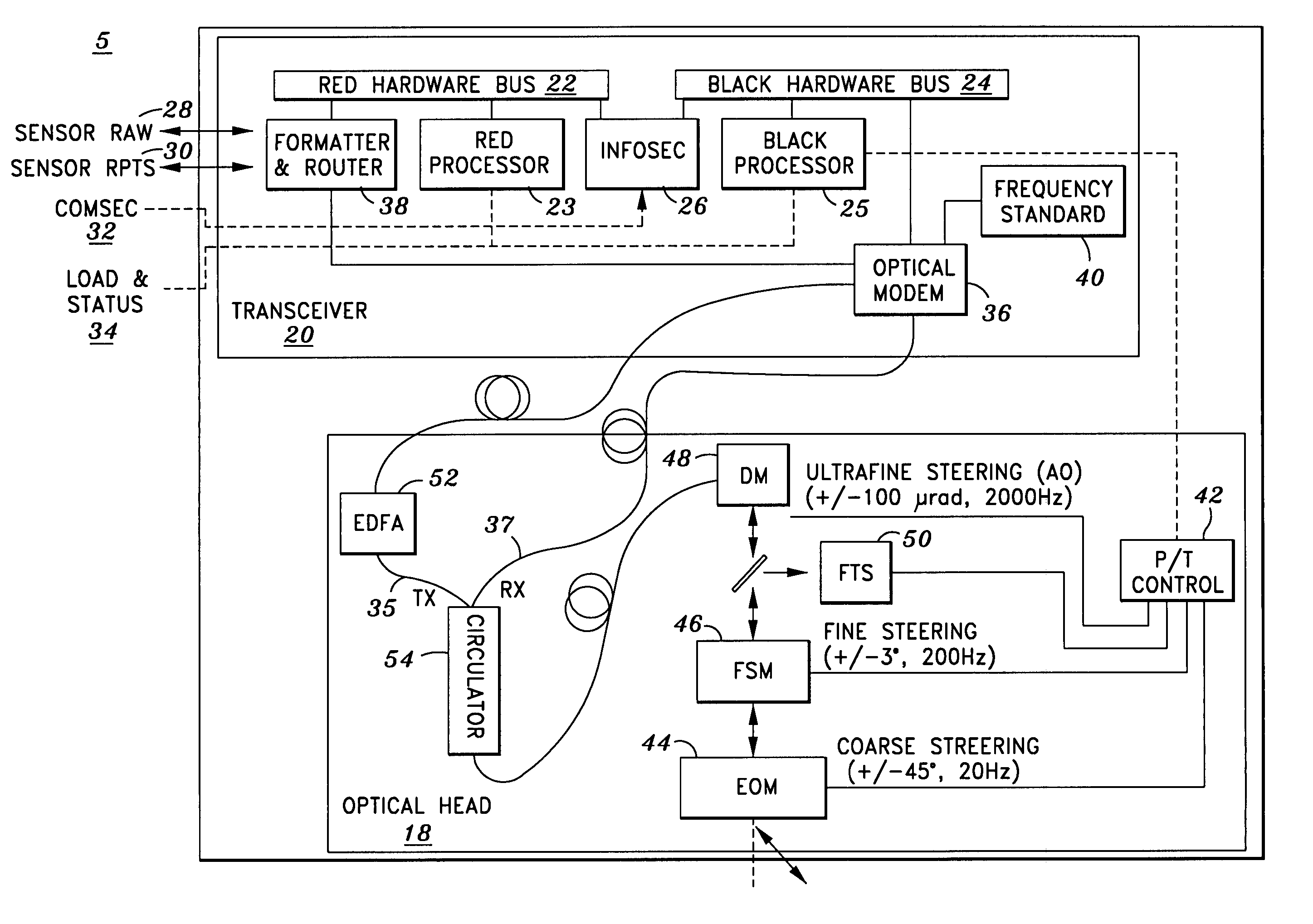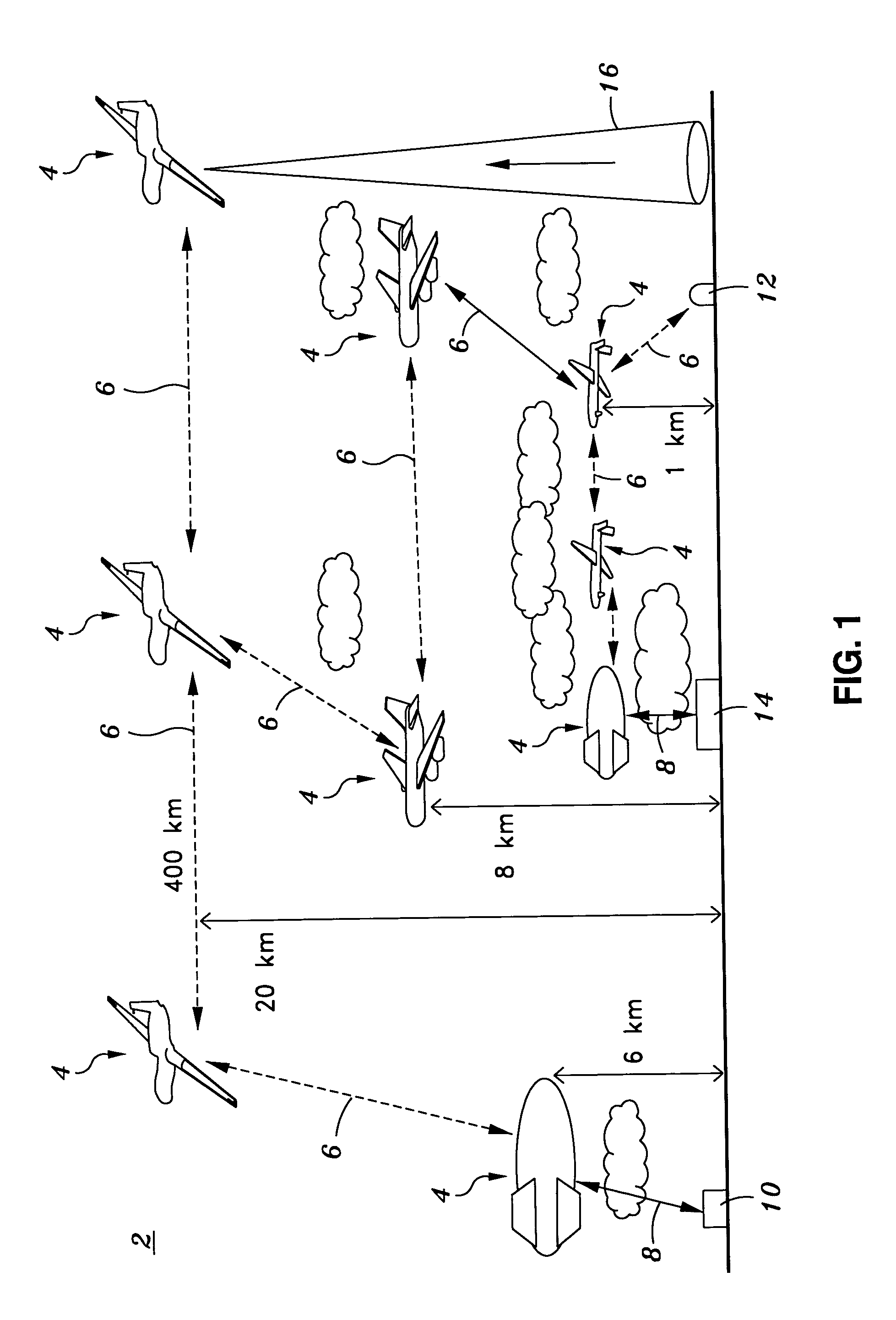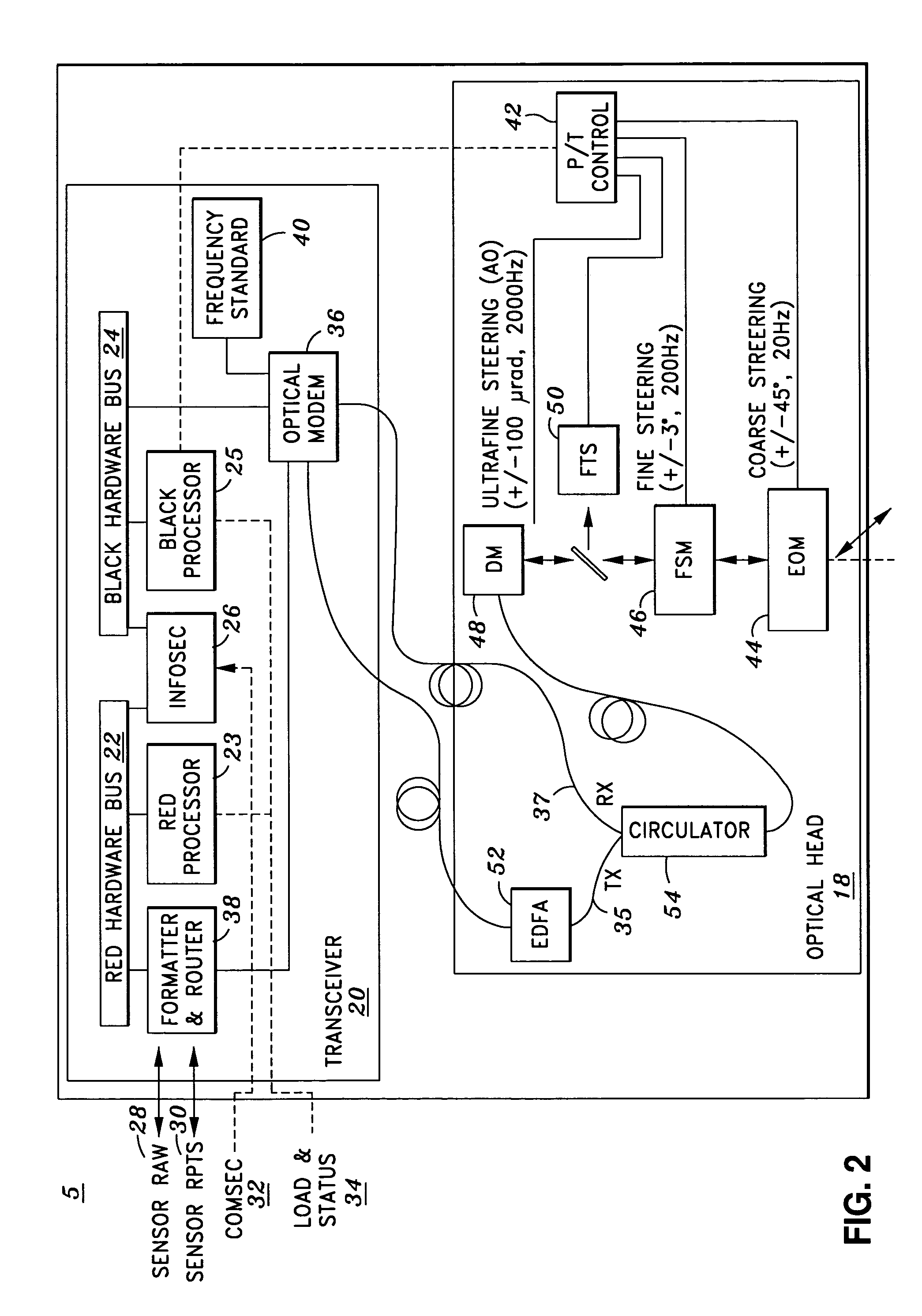Airborne free-space-optical system utilizing three-tier, ultrafine steering
a technology of optical head and airborne space, applied in the field of free spaceoptical (fso) communications, can solve the problems of high cost of known pointer-tracker systems that can achieve the aforementioned jitter requirements, more complex and challenging environment, vibration-induced and aero-optic-induced jitter, etc., to achieve the effect of facilitating high-pointer resolution, pointer-tracker systems, and reducing the jitter
- Summary
- Abstract
- Description
- Claims
- Application Information
AI Technical Summary
Benefits of technology
Problems solved by technology
Method used
Image
Examples
Embodiment Construction
[0035]The particulars shown herein are by way of example and for purposes of illustrative discussion of the embodiments of the present invention only and are presented in the cause of providing what is believed to be the most useful and readily understood description of the principles and conceptual aspects of the present invention. In this regard, no attempt is made to show structural details of the present invention in more detail than is necessary for the fundamental understanding of the present invention, the description taken with the drawings making apparent to those skilled in the art how the several forms of the present invention may be embodied in practice.
Overview of Airborne, the Free-Space-Optical Communications System
[0036]The present invention provides an airborne, free-space-optical (FSO) communications system which may be utilized by a variety of airborne platforms such as unmanned aerial aircraft, manned aircraft, tethered aircraft, and commercial aircraft to name a...
PUM
 Login to View More
Login to View More Abstract
Description
Claims
Application Information
 Login to View More
Login to View More - R&D
- Intellectual Property
- Life Sciences
- Materials
- Tech Scout
- Unparalleled Data Quality
- Higher Quality Content
- 60% Fewer Hallucinations
Browse by: Latest US Patents, China's latest patents, Technical Efficacy Thesaurus, Application Domain, Technology Topic, Popular Technical Reports.
© 2025 PatSnap. All rights reserved.Legal|Privacy policy|Modern Slavery Act Transparency Statement|Sitemap|About US| Contact US: help@patsnap.com



